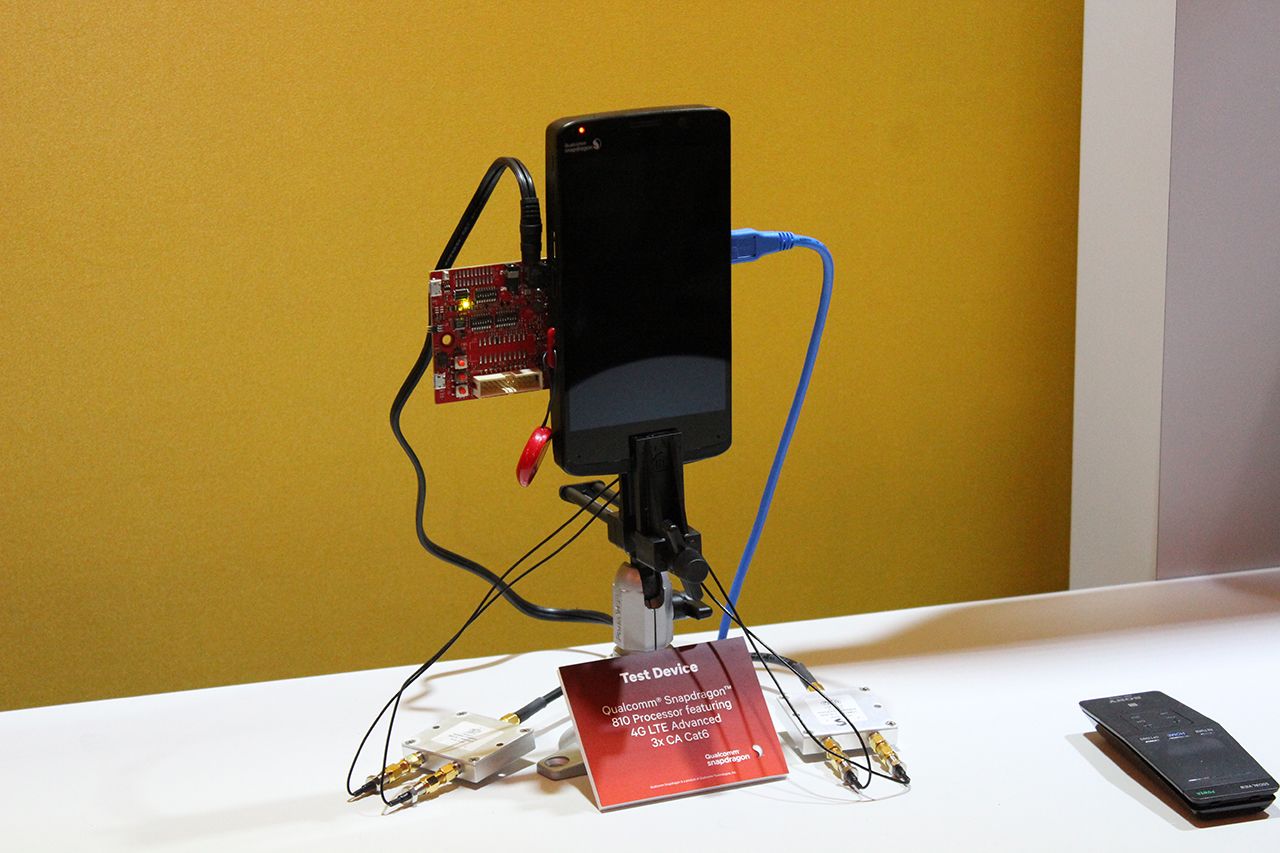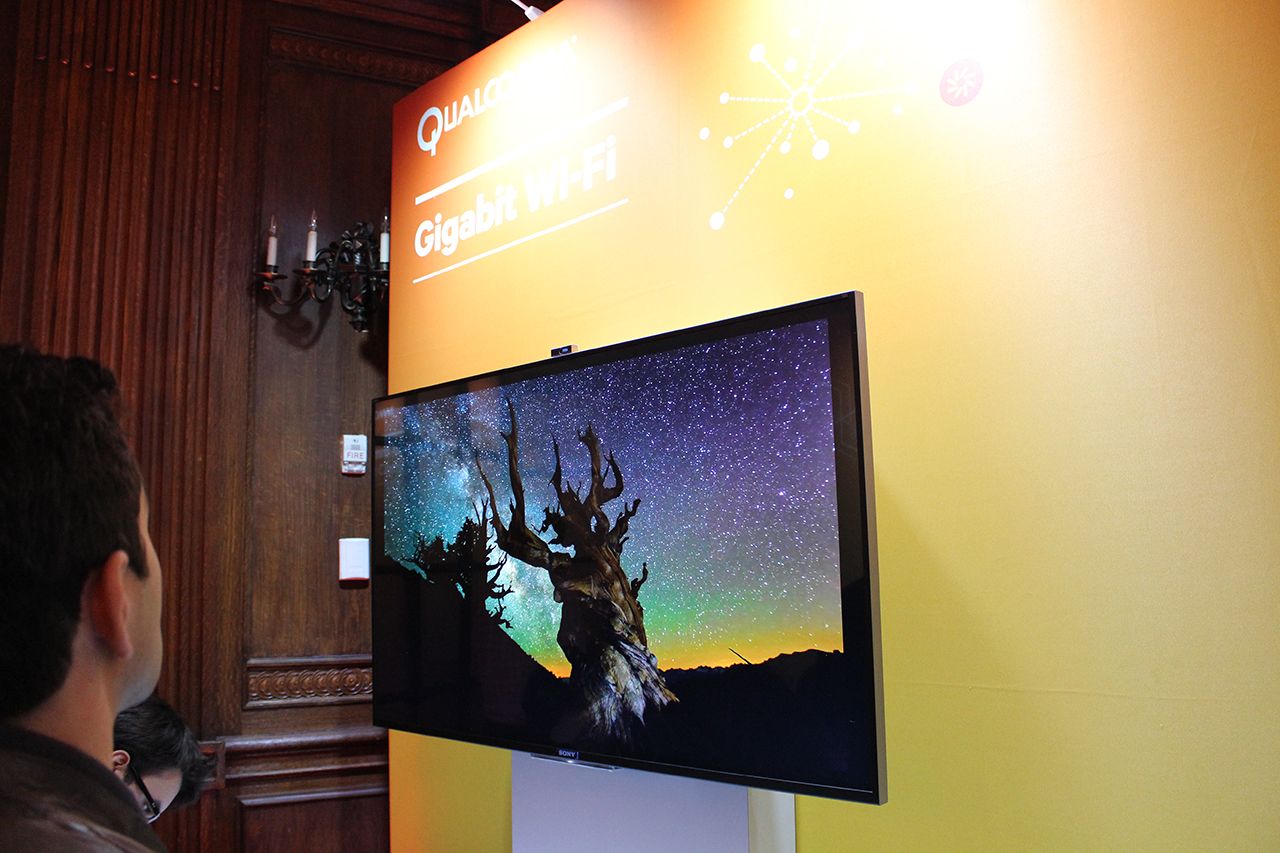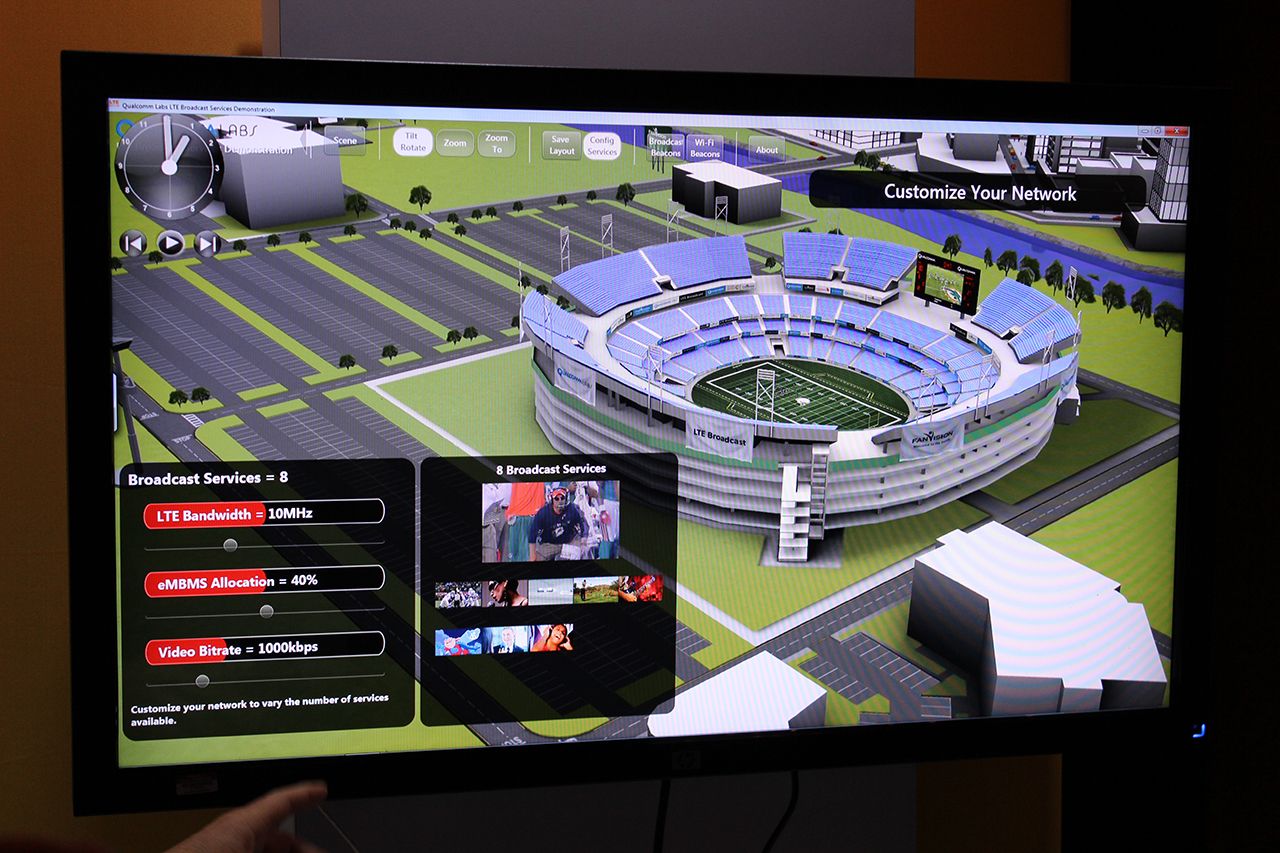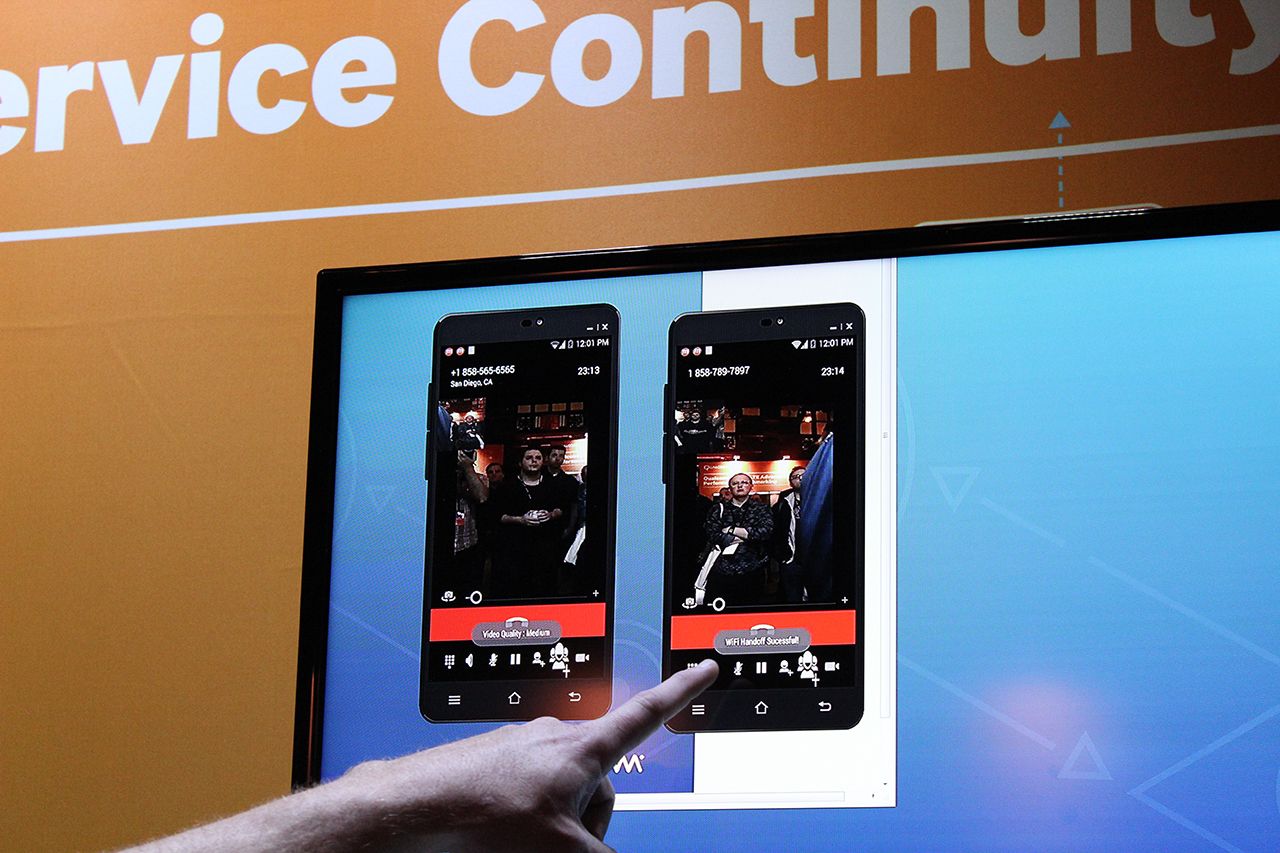We've met with Qualcomm for some world first demos of the future of super-fast Wi-Fi and LTE. The recently announced Wi-Gig, that manages nearly 1GB per second downloads, was on show as well as future LTE which allows direct phone to phone data sharing and broadcast over LTE.
So a home without cables, including no HDMI to your TV, file sharing and video chat phone to phone, and seamless jumps between super-fast connections are all coming soon.
Wi-Gig
The future of Wi-Fi is called Wi-Gig, as recently announced by Intel and Samsung. This uses 802.11ad, rather than the current 802.11ac, which is code for super-speed connectivity. This is so fast, at 7Gbps theoretical, that is will replace all cables in the home, even your HDMI. 4K will be streamed from your Wi-Gig router directly to the TV without a cable in sight. Also it works directly between devices meaning it won't lose speed as more devices use it.
So what's the catch? 802.11ad is line of sight meaning it won't go through walls. But Qualcomm says this won't be a problem as you'll have the main unit with your TV and anything else you want to run fast, then as you change rooms those devices will switch to 802.11ac for continued high speeds you're used to now, seamlessly.
LTE-B
LTE-B could be the future of broadcasting, one that will certainly give current systems like Sky a run for their money.
Broadcast LTE was recently shown off at Wembley Stadium in London by EE to prove how useful this will be. Rather than slowing down users where there are too many people, like current LTE, it will deliver high-speed connections to all.
If the stadium wants to broadcast other games to those in the stadium it can do so directly to each device with one stream, rather than sending it out multiple times to everyone. This will mean a huge saving of space on the network's bandwidth which can then be used for other things.
From an advertiser's perspective this will be combined with LTE-D which can send direct feeds to individuals, meaning personal adverts for each user before jumping back into the LTE-B feed that's the same for everyone.
Broadcast over LTE will mean users can watch a tennis game, say, in 4K and tap to zoom and see how close the ball was to the line, theoretically. It should make the viewing experience far more enhanced beyond what we can even imagine right now.
With EE announcing its EE TV box recently we can imagine this LTE-B will be of great use in the future. Technically it could mean streaming directly to the box, or a TV with it built-in, so all the TV will need is a power cable and nothing else.
LTE-D
One of the most major advanced of LTE Direct is the ability to send files between devices. As long as the other person is within a kilometre you'll be able to find them and send files directly, like WhatsApp photos or Skyping, without the data going back via the network as it does now. This is another way to free bandwidth for the network meaning it will be able to deliver a more consistent high speed to everyone, even when lots of people are in one area.
VoLTE
The future of calls is video, from voice over LTE. It's been a sci-fi fantasy for a long time and even now doesn’t work as well as we'd like. But with the new LTE, 3G and Wi-Fi transitioning from Qualcomm the future should be far smoother.
The technology we saw was capable of seamlessly jumping between 3G, LTE and Wi-Fi without the user seeing a jump in video or audio. This means the user gets an experience that just works while the network keeps bandwidth filling to a minimum once again.
In our demo a video chat was shown where the user can multitask into a browser and back to the video chat. The audio remains while in the browser then the video reappears when opened again – this was totally seamless and smooth.
When can we expect the next-gen chips?
The latest Snapdragon 810 that we saw was pumping out up to 4.6Gbps, supported LTE-B (which chips as old as the 801 will support), Wi-Gig, 3 carrier aggregation meaning a more stable high speed connection on LTE, and VoLTE. This will begin to appear in mobile devices as soon as the start of next year.
READ: What is EE TV and why is it worthy of sitting under your TV?




